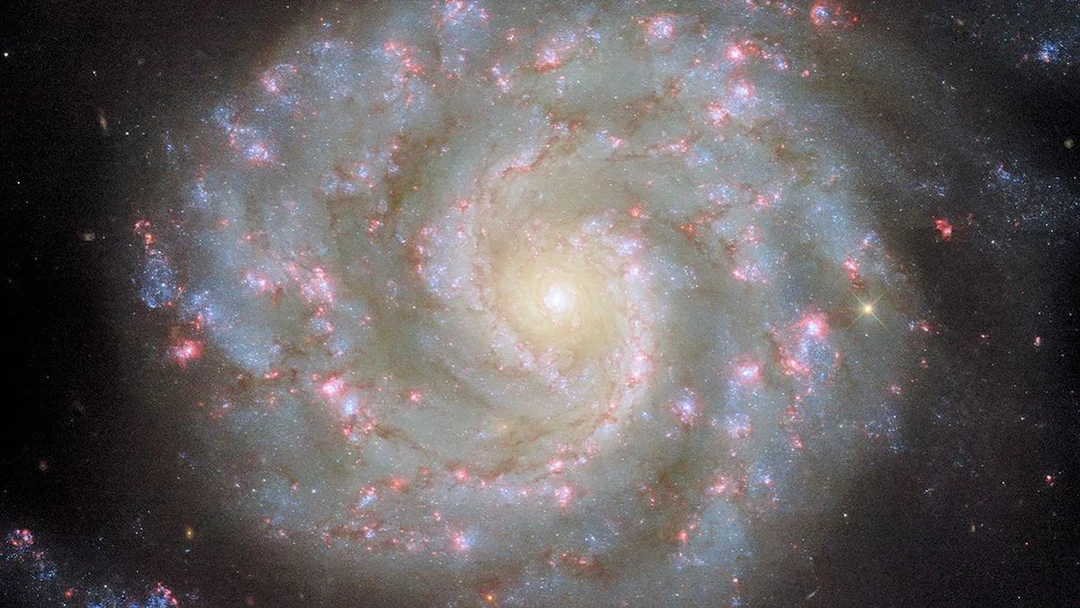
Hubble Captures Stunning Face-On View of Spiral Galaxy NGC 3596: Unraveling the Mysteries of Galactic Arms
Prepare to be mesmerized by a breathtaking image captured by the Hubble Space Telescope, showcasing the spiral galaxy NGC 3596 in stunning face-on detail. This captivating view offers astronomers a unique opportunity to study the intricate structure and dynamics of spiral galaxies, specifically the enigmatic formation of their iconic arms.

Discovered by British astronomer William Herschel in 1784, NGC 3596 resides approximately 90 million light-years away in the constellation Leo. What makes this galaxy particularly fascinating is its orientation – almost perfectly face-on from Earth, allowing for a clear and unobstructed view of its spiral arms.
These bright arms are composed of stars, gas, and dust, the very building blocks of galaxies. The vibrant pink regions and young blue stars tracing the arms indicate areas of intense star formation. This makes NGC 3596 a living laboratory for studying the birth and evolution of stars within a spiral galaxy.
As reported by Sci.News, "The bright arms mark where the galaxy’s stars, gas and dust are concentrated. Star formation is also most active in a galaxy’s spiral arms, as shown by the brilliant pink star-forming regions and young blue stars tracing NGC 3596’s arms in this image."
However, one of the biggest mysteries surrounding spiral galaxies is the formation of their arms. "What causes these spiral arms to form? It’s a surprisingly difficult question to answer, partly because of the remarkable diversity of spiral galaxies," NASA officials stated. Scientists are still piecing together the puzzle, exploring different theories to explain this fundamental aspect of galactic structure.
Early ideas were challenged by the "winding problem." If the arms were permanent structures, they would wind tighter and tighter as the galaxy rotates, eventually disappearing. But now, as Space.com reports, researchers believe these arms are more like “traffic jams,” patterns of high and low density. Stars, gas, and dust slow down as they enter a spiral arm, creating the visual effect we observe.
The Hubble image allows researchers to probe these density variations and better understand how they contribute to the overall structure of the galaxy. Its advanced cameras can resolve the distribution of stars and dust within the arms, providing valuable data for testing these models.

NGC 3596 joins the ranks of other stunning spiral galaxy images captured by NASA's Hubble, as highlighted by Space.com, each contributing to our growing knowledge of these cosmic giants.
This new Hubble image of NGC 3596 serves as a reminder of the beauty and complexity of the cosmos. It prompts us to consider the fundamental questions about the universe we inhabit. What other secrets are hidden within the swirling arms of spiral galaxies? Join the conversation and share your thoughts in the comments below!